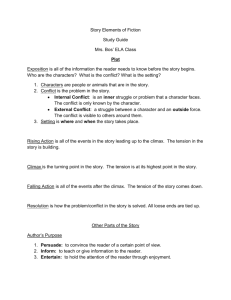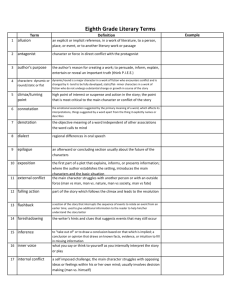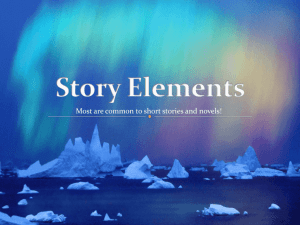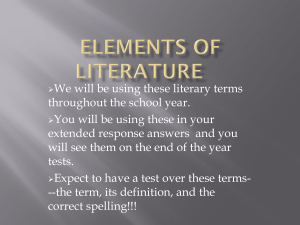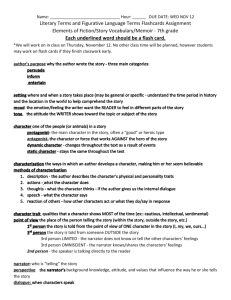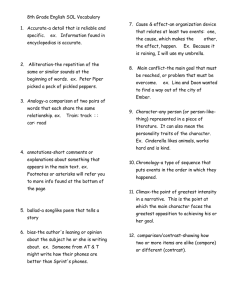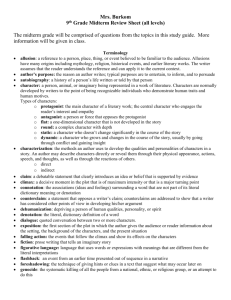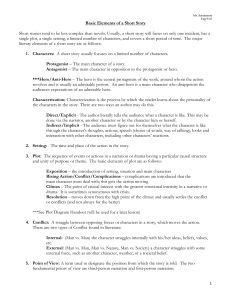List
advertisement
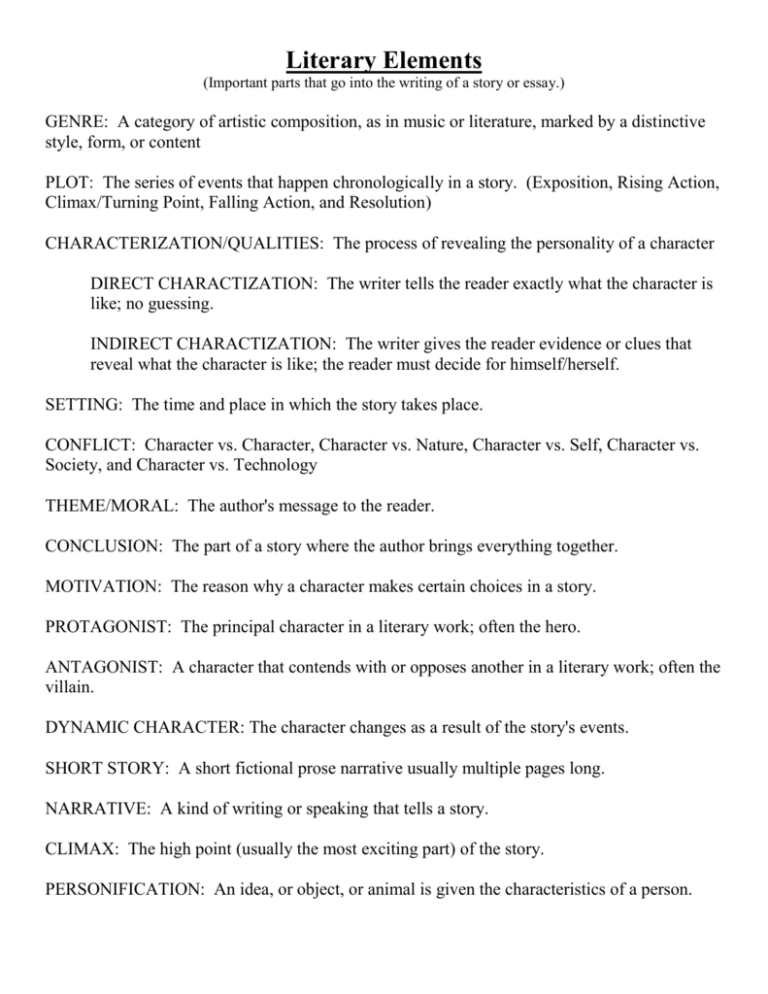
Literary Elements (Important parts that go into the writing of a story or essay.) GENRE: A category of artistic composition, as in music or literature, marked by a distinctive style, form, or content PLOT: The series of events that happen chronologically in a story. (Exposition, Rising Action, Climax/Turning Point, Falling Action, and Resolution) CHARACTERIZATION/QUALITIES: The process of revealing the personality of a character DIRECT CHARACTIZATION: The writer tells the reader exactly what the character is like; no guessing. INDIRECT CHARACTIZATION: The writer gives the reader evidence or clues that reveal what the character is like; the reader must decide for himself/herself. SETTING: The time and place in which the story takes place. CONFLICT: Character vs. Character, Character vs. Nature, Character vs. Self, Character vs. Society, and Character vs. Technology THEME/MORAL: The author's message to the reader. CONCLUSION: The part of a story where the author brings everything together. MOTIVATION: The reason why a character makes certain choices in a story. PROTAGONIST: The principal character in a literary work; often the hero. ANTAGONIST: A character that contends with or opposes another in a literary work; often the villain. DYNAMIC CHARACTER: The character changes as a result of the story's events. SHORT STORY: A short fictional prose narrative usually multiple pages long. NARRATIVE: A kind of writing or speaking that tells a story. CLIMAX: The high point (usually the most exciting part) of the story. PERSONIFICATION: An idea, or object, or animal is given the characteristics of a person. POINT OF VIEW: The perspective by which a story is presented to the reader. First Person: The narrator is a character in the story and refers to him/herself as “I. Third Person Omniscient: This type of narrator is not a character, but is all-knowing and is able to recount the background and inside thoughts and feelings of any character. Third Person Limited: Like the omniscient narrator, this narrator is not a character in the story, but rather provides the reader only the inside thoughts of one character, and none of the thoughts of any of the other characters. FIGURATIVE LANGUAGE: Creative ways of using writing to describe parts of a story. SIMILE: A figure of speech in which two essentially unlike things are compared, using like or as, METAPHOR: A figure of speech in which a word or phrase that ordinarily designates one thing is used to designate another, thus making a comparison. (No like or as) HYPERBOLE: A figure of speech in which exaggeration is used for emphasis or effect. IMAGERY: Visually descriptive or figurative language, creates a picture in the reader’s mind. RHYME SCHEME: The pattern of rhyme in a poem. FLASHBACK: When a story presents detailed accounts of events from the past within a story. FORESHADOW: When a story presents clues to events to occur in the future. SYMBOLISM: The practice of representing things by means of symbols or of attributing symbolic meanings or significance to objects, events, or relationships. IRONY: The use of words to convey a meaning that is opposite of its literal meaning.
